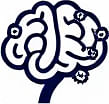The Halo Effect and Its Impact on Daily Judgments
 by Thaddeus Blanda
by Thaddeus Blanda
The Halo Effect is a cognitive bias that occurs when a single positive characteristic of a person influences our overall opinion of them. This phenomenon affects areas like hiring and relationships, often leading to skewed decisions. Exploring its roots and effects can help improve critical thinking.
The Halo Effect represents a common way our minds simplify information. It happens when one favorable trait in someone casts a positive light on their other qualities. For instance, if a job candidate is charismatic, we might overlook their lack of experience.
What Is the Halo Effect?
In psychology, the Halo Effect refers to how an initial impression can color subsequent evaluations. This bias often stems from our tendency to seek patterns and consistency. A person who appears attractive might be assumed to be more competent or kind, based solely on that first trait.
This concept gained prominence through studies in human behavior. Researchers found that people frequently allow one attribute to dominate their perceptions. Halo Effect can appear in many settings, from classrooms to workplaces.
Everyday Examples of the Halo Effect
Consider how this bias plays out in real life. In education, a student who excels in one subject might receive higher grades in others, even if their performance varies. Teachers could be influenced by early successes, leading to assumptions about overall ability.
In business, leaders might favor employees who dress professionally, assuming they are more dedicated. This can result in unfair promotions or missed opportunities for others. The bias extends to consumer choices too—brands with appealing packaging often seem superior, regardless of actual quality.
Physical appearance is another area where the Halo Effect is evident. Studies show that attractive individuals are frequently perceived as more trustworthy. This can influence outcomes in legal settings, where jurors might be swayed by looks rather than evidence.
Consequences in Professional and Personal Life
The implications of this bias are significant. In professional environments, it can hinder fair hiring practices. Companies might select candidates based on superficial traits, resulting in teams that lack diversity of skills. Over time, this leads to reduced innovation and productivity.
On a personal level, relationships can suffer. People might idealize partners due to initial charm, ignoring red flags. This creates unrealistic expectations and potential disappointment later.
Cognitive development experts note that such biases affect learning processes. Individuals who recognize these patterns can work toward more balanced views, fostering better decision-making habits.
Strategies to Recognize and Reduce the Halo Effect
To address this bias, start by increasing awareness. Reflect on your initial judgments and question whether they are based on a single factor. For example, during interviews, use structured questions to evaluate all candidates equally.
Another approach involves gathering more data. Seek feedback from multiple sources before forming opinions. In team settings, encourage diverse input to counteract individual biases.
Education plays a key role here. By learning about cognitive biases like the Halo Effect, people can develop tools for clearer thinking. Simple practices, such as journaling daily observations, help track and challenge preconceived notions.
The Role of Halo Effect in Society
Broader societal impacts include media portrayals. Celebrities with positive images often influence public opinion on unrelated matters. This can shape cultural norms and expectations, sometimes reinforcing stereotypes.
In marketing, companies leverage this bias by highlighting one strong feature of a product. Consumers might then assume excellence across the board, driving sales without full scrutiny.
Understanding these dynamics aids in personal growth. For professionals in business strategies, recognizing the bias leads to fairer practices and better outcomes.
Conclusion
The Halo Effect highlights how our brains create shortcuts that can mislead us. By acknowledging its presence, individuals can strive for more objective assessments. This not only enhances personal relationships but also improves professional decisions. Embracing awareness of such biases supports ongoing cognitive development, making it a valuable insight for lifelong learners.
In summary, being mindful of the Halo Effect encourages a more nuanced view of the world around us.
